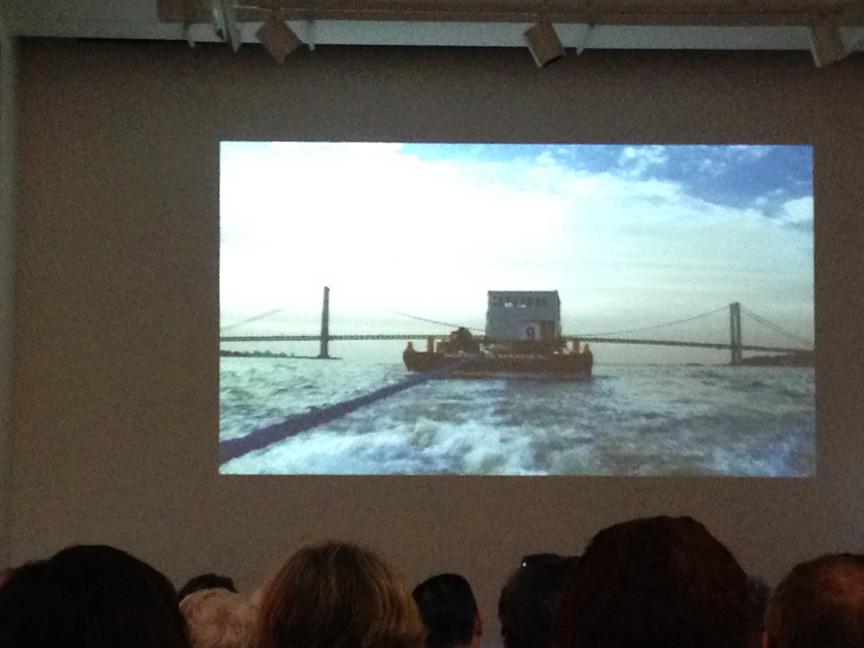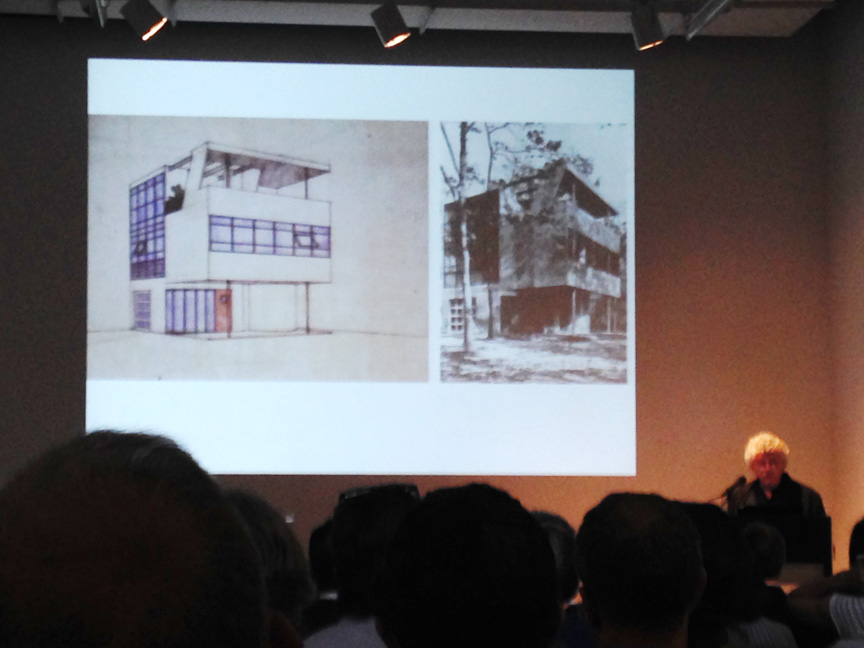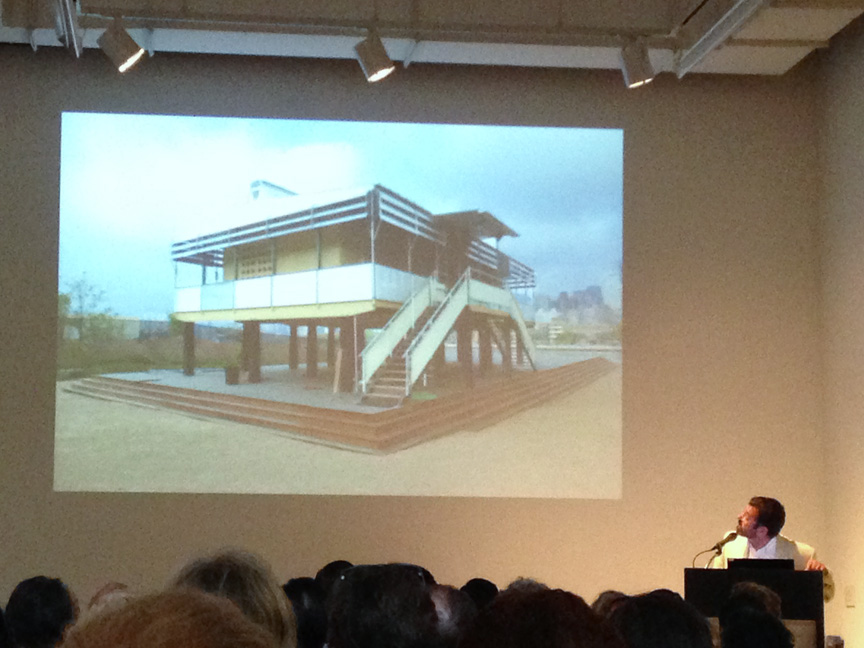by: James Way
Many homes reach the point when owners outgrow them or they’re sold or abandoned. Sometimes, the property is more desirable than a piece of architectural history, which is often left to rot away. Every year we hear stories of an architectural milestone in gross disrepair or under threat of sale or demolition. Mary Kay Judy, principal of Architectural & Cultural Heritage Conservation, cited Mies van der Rohe’s Farnsworth House as a prime example of a home with a once, and again, uncertain future. Though it was preserved in situ, when it went to auction in 2003, the purchaser had the option to relocate it to a new site. The four houses in the “Moving Modern” panel were all moved to ensure their safety and continued existence, each under very different circumstances, from wholesale relocations to disassembled parts in storage.
The 1969 Lieb House by Robert Venturi, FAIA, Int. RIBA, and Denise Scott Brown, RIBA, In. RIBA, had been sold and threatened with imminent teardown. The developer, ambivalent about the house, allowed it to be removed. Mobilizing immediately, Venturi,Scott Brown, and their son James Venturi, who documented the affair in the film Saving Lieb House (2009), set about with the new owners to plan its salvation. Over 10 days the house traveled 95 miles by truck and barge from Barnegat Light, NJ, to Glen Cove, NY, while the prominently featured Frederic Schwartz, FAIA, worked tirelessly to secure permits and coordinate its relocation (see “A Preservation Saga with a Happy Ending,” e-Oculus 12.22.09). With inspiring footage of the house passing under New York City’s East River bridges, one can hear Scott Brown say, “It’s the little house that could.” After Lieb House finds its new footings, a late-to-the-landing Schwartz deadpans, “Yeah, I missed the whole fucking thing.”
An earlier specimen is Andrew Gellar’s Pearlroth House (1959) in West Hampton, NY, which took a much shorter journey – 40 feet. The second-generation owner wanted a larger beach home and to restore the original “Double Diamond.” The new house, started in 2010 by COOKFOX, began construction after lifting and swinging the Pearlroth out of the way to new piers. Due to FEMA and other code issues, the Pearlroth was moved as far as possible from the beach to make way for the new house. Luca Baraldo, the project architect, noted that the process was simple compared to the Lieb House’s ordeal, but “we picked the windiest day just to add excitement to the 10-minute process. I couldn’t tell if the client was amused or worried.”
Two prefabricated homes have an easier, if less determined, future because they can be stored indefinitely. Jean Prouvé’s Maison Tropicale (1951) and the Case Study Aluminaire House (1931) by A. Lawrence Kocher and Albert Frey have both been dismantled from their previous locations, Brazzaville, Congo, and New York City, respectively. Since the former was restored it has been rebuilt twice, once in New York and at the Tate in London. Eric Hildebrandt, project manager at Andre Tchelistcheff Architects, who has been overseeing the Maison Tropicale restoration, showed a time-lapse reconstruction video that made assembly seem quite easy. Hildebrandt hopes the house will be rebuilt permanently on a Hudson Valley site. Meanwhile, Wallace Harrison purchased the Aluminaire House, rebuilt it, then relocated it on his property before finally dismantling it. Recent attempts by Jon Michael Schwarting, AIA, partner at Campani and Schwarting Architects, to install it at the Phipps Houses in Sunnyside Gardens, Queens, met with disapproval from the Landmarks Commission and community. Still too ahead of its time for some sites, Schwarting established the Aluminaire House Foundation that now cares for the structure. While both are secured, their futures are uncertain.
As Scott Brown summarized in Saving Lieb House, “You built and didn’t think you would have to go through all this.” Thankfully these great works have been moved and are still moving.
James Way, Assoc. AIA, Marketing Manager at Dattner Architects, frequently contributes to e-Oculus.
Event: “Moving Modern”
Location: Center for Architecture, 07.23.14
Speakers: Luca Baraldo, Associate, COOKFOX Architects; Jon Michael Schwarting, AIA, Partner, Campani and Schwarting Architects; Eric Hildebrandt, Project Manager, Andre Tchelistcheff Architects; and James Venturi, Filmmaker
Moderator: Mary Kay Judy, Principal, Architectural & Cultural Heritage Conservation
Organized by: AIANY Historic Buildings Committee












